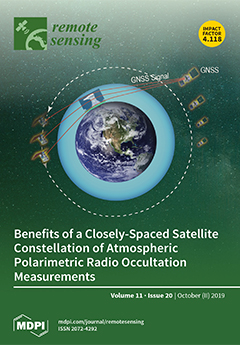Open AccessArticle
Remote Sensing of the Atmosphere by the Ultraviolet Detector TUS Onboard the Lomonosov Satellite
by
Pavel Klimov, Boris Khrenov, Margarita Kaznacheeva, Gali Garipov, Mikhail Panasyuk, Vasily Petrov, Sergei Sharakin, Andrei Shirokov, Ivan Yashin, Mikhail Zotov, Viktor Grebenyuk, Andrei Grinyuk, Maria Lavrova, Artur Tkachenko, Leonid Tkachev, Alla Botvinko, Oleg Saprykin, Andrei Puchkov and Alexander Senkovsky
Cited by 20 | Viewed by 5054
Abstract
The orbital detector TUS (Tracking Ultraviolet Setup) with high sensitivity in near-visible ultraviolet (tens of photons per time sample of 0.8
s of wavelengths 300–400 nm from a detector’s pixel field of view) and the microsecond-scale temporal resolution was developed by the
[...] Read more.
The orbital detector TUS (Tracking Ultraviolet Setup) with high sensitivity in near-visible ultraviolet (tens of photons per time sample of 0.8
s of wavelengths 300–400 nm from a detector’s pixel field of view) and the microsecond-scale temporal resolution was developed by the Lomonosov-UHECR/TLE collaboration and launched into orbit on 28 April 2016. A variety of different phenomena were studied by measuring ultraviolet signals from the atmosphere: extensive air showers from ultra-high-energy cosmic rays, lightning discharges, transient atmospheric events, aurora ovals, and meteors. These events are different in their origin and in their duration and luminosity. The TUS detector had a capability to conduct measurements with different temporal resolutions (0.8
s, 25.6
s, 0.4 ms, and 6.6 ms) but the same spatial resolution of 5 km. Results of the TUS detector measurements of various atmospheric emissions are discussed and compared to data from previous experiments.
Full article
►▼
Show Figures





